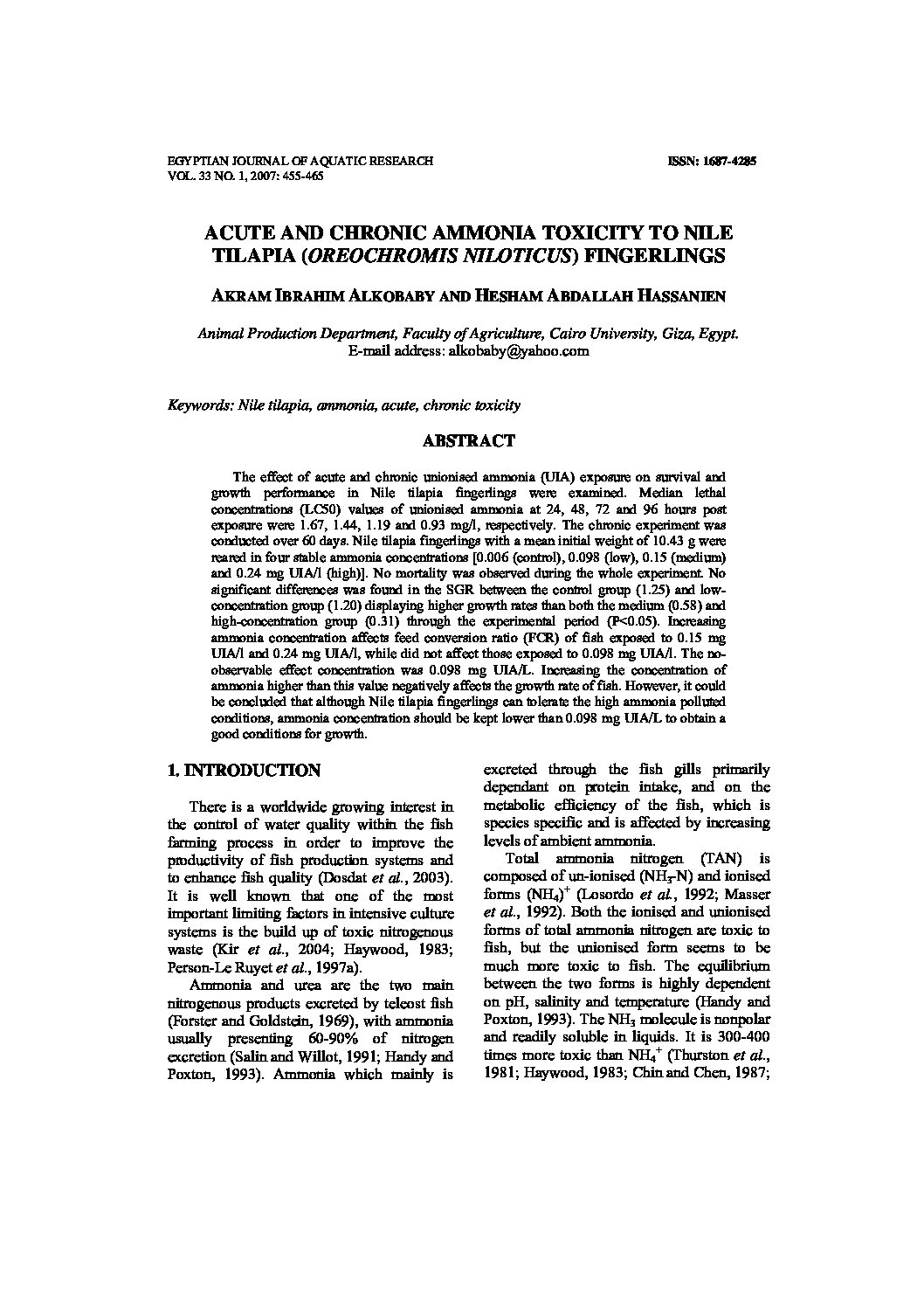Categories
vol-33BIODEGRADATION KINETICS OF BROMOXYNIL AS A
POLLUTION CONTROL TECHNOLOGY
AHMAD I. ASKAR1
, GAMAL H. IBRAHIM2 ANDKHALED A. OSMAN3
National Institute of Oceanography and Fisheries , Alexandria, Egypt, and 2College of Science,
Al-Qassim University and 3
College of Agriculture & Veterinary Medicine,
Al-Qassim University, Al-Qassim, KSA
ABSTRACT
Nonpoint source (NPS) pollution from agriculture is the leading source of impairment
to Survey Rivers and lakes. Pesticides are one of the major NPS pollutants that result from
agricultural activities. Among those pesticides, is Bromoxynil (BRMX) which is a widely
used herbicide. The present study was carried out to determine the capability of selected
biological control agents to degrade BRMX at different incubation periods. Microbial
degradation of BRMX at the rate of 100 ppm in pure liquid culture media of either seven
isolates of bacteria; Azotobacter chroococcum, Azospirillium barasilense, Klebsilense
pneumoneae, Pseudomonas cepacia, Pseudomonas fluoresences, Bacillus subtilis, and
Bacillus polymyxa or two isolates of fungi; Trichoderma viride and Trichoderma
harzianum has been determined at different time intervals using high performance liquid
chromatography (HPLC) with UV detection, and solid phase extraction (SPE) technique. A
biphasic model was assumed in order to carry out the statistical study of the loss of BRMX
from the media enriched with either bacteria or fungi. The results showed that, the
percentages of residual amount of BRMX from media enriched with bacteria ranged from
29.51 -71.94, 18.89-43.88, 9.82-35.07, 3.47-31.90 and 1.80-19.24% after 3, 7, 14, 21 and
28 days of incubation, respectively. On the other hand, the residual amount of BRMX from
media enriched with fungi ranged from 45.61-60.26, 21.25-30.56, 6.48-20.63, 1.25-10.49
and 0.63-1.56% after 3, 7, 14, 21 and 28 days of incubation, respectively. The data indicate
that there was a faster rate of BRMX loss in the first phase than the second one. This is
clearly reflected in the t1/2 values. Therefore, it is recommended to use these
microorganisms as biological control agents for the integrated pest management (IPM)
programs to reduce agricultural non point source (NPS) pollution to prevent pesticides from
reaching ground and surface water.







